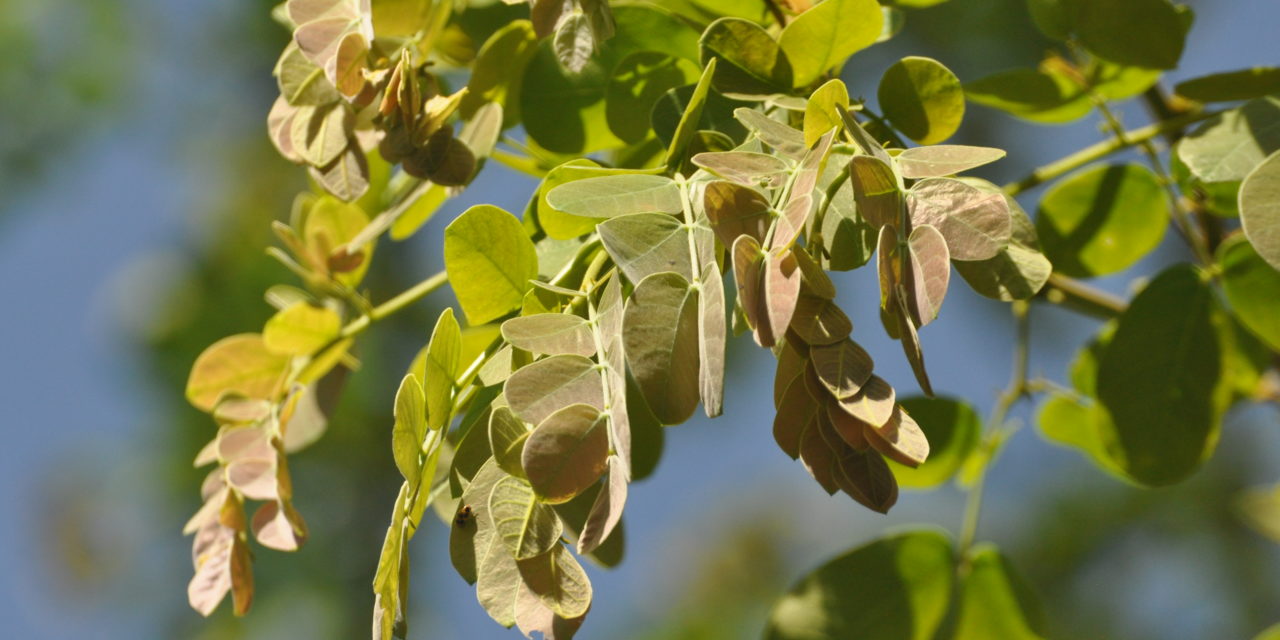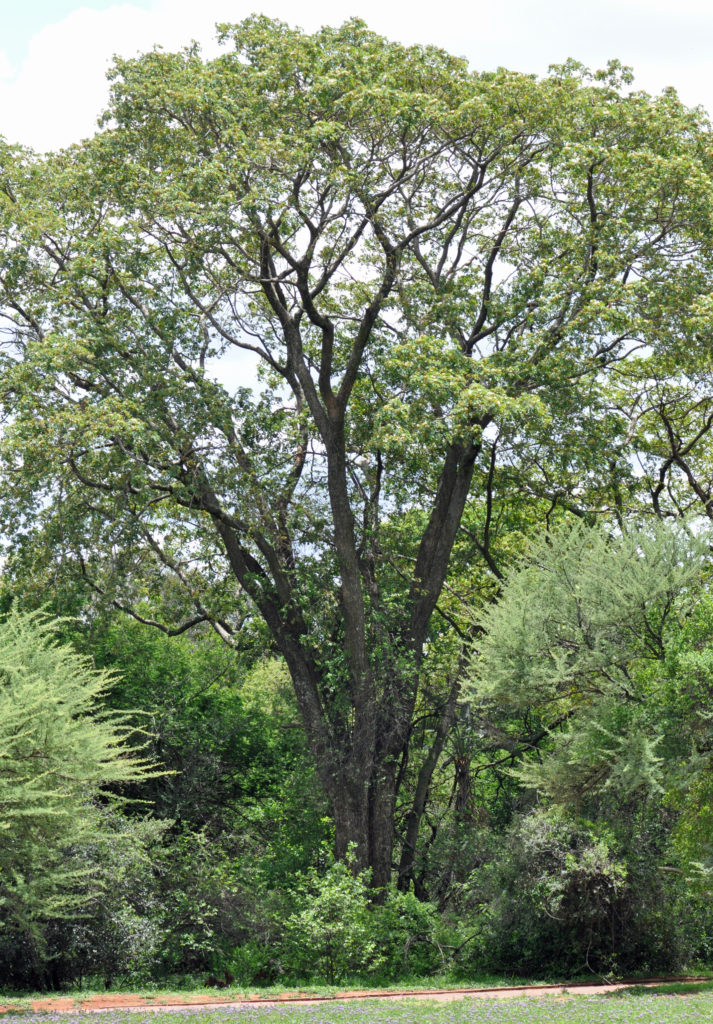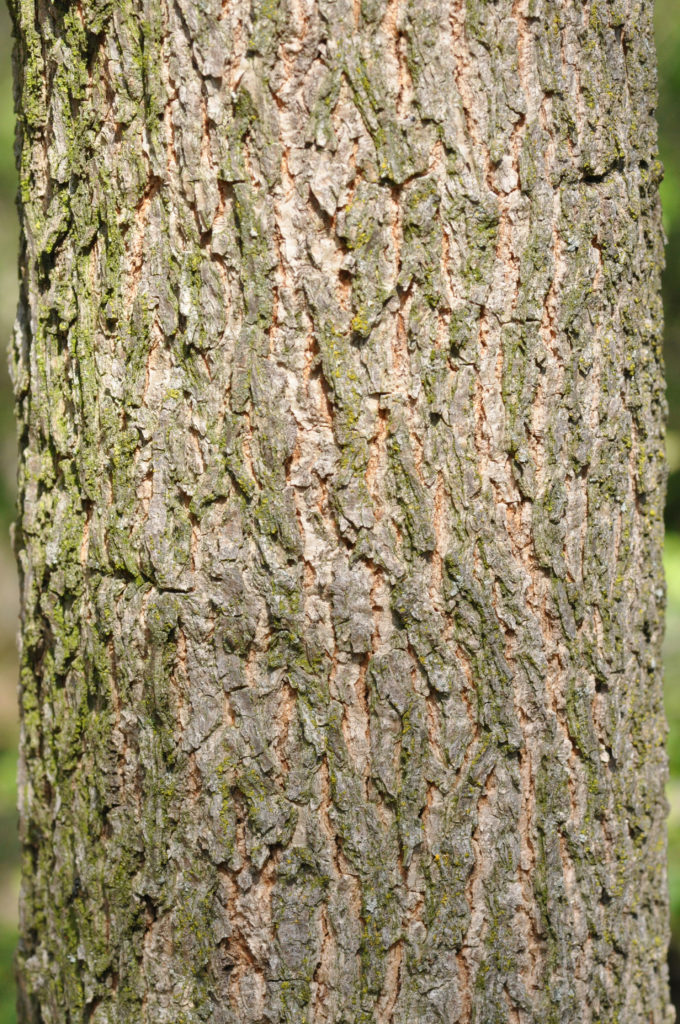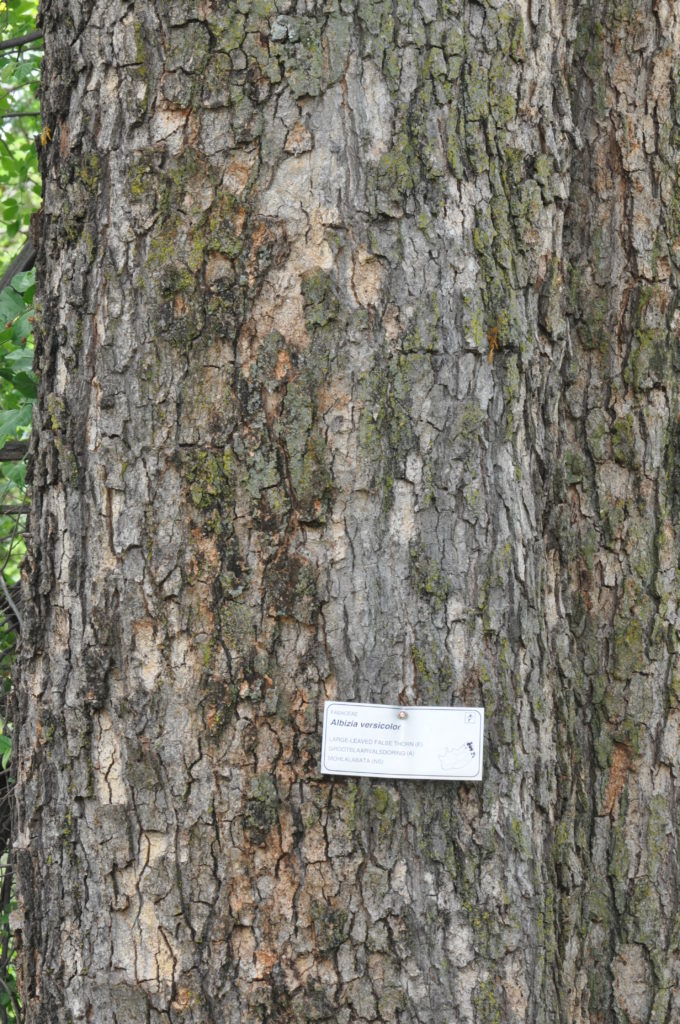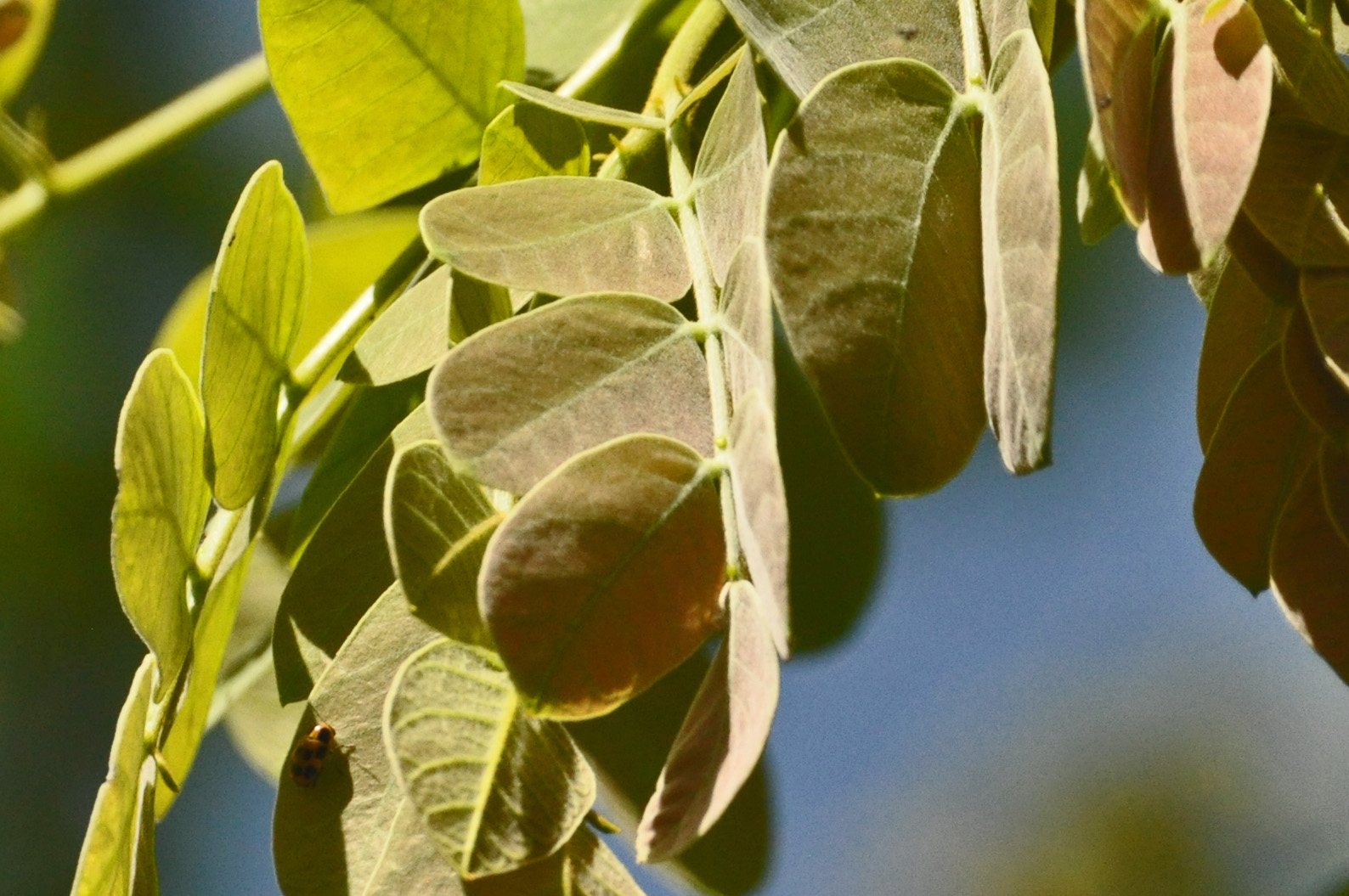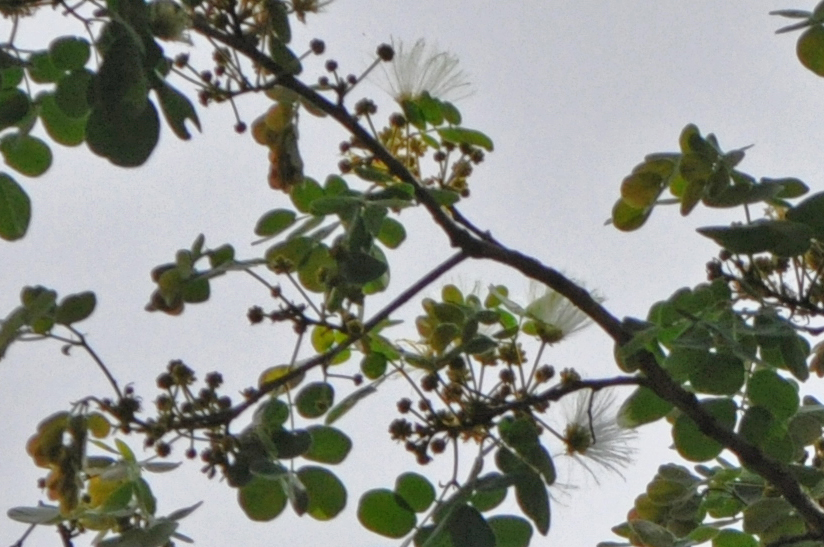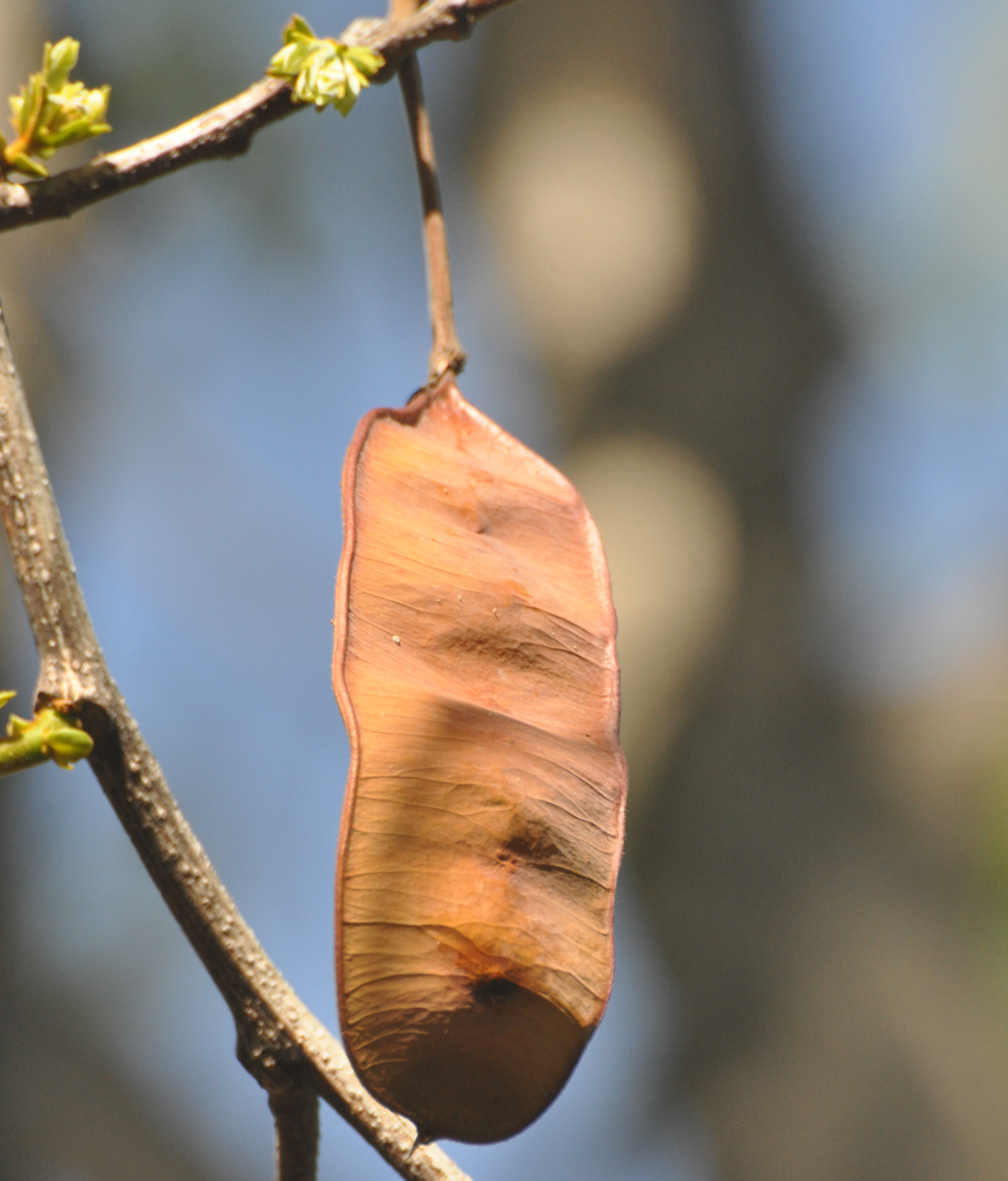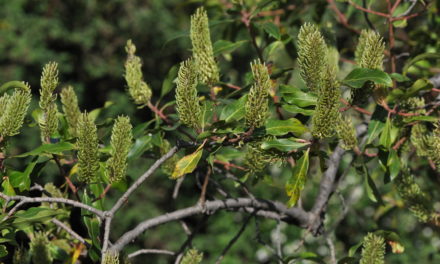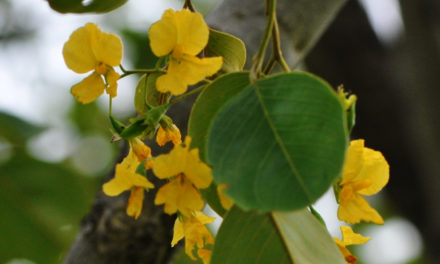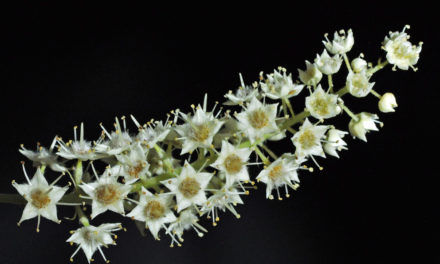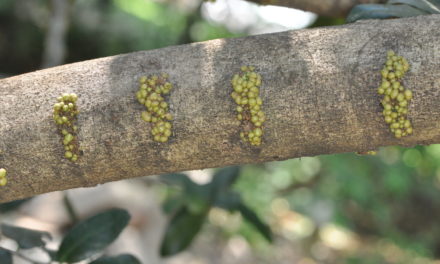Albizia versicolor
General Info
This impressive spineless Tree has a rough barked cylindrical trunk & is up 20m high. Bipinnate Leaves have large, asymmetric, hairy, leaflets & lack stipels. Small, bisexual, regular Flowers in a half-spherical inflorescence. Stamens with creamy white long filaments provide colour. Style extends past the anthers. The many coloured, flat, wide young Fruit becomes a reddish-brown dehiscent pod with hard seeds.
Description
Previous Names: Albizia mossambicensis, Albizia versicolor var. mossambicensis.
SA Tree No. 158
Common names: (Afr) Grootblaarvalsdoring, Grootblaar-valsdoring, Sandkiaat, Sand-kiaat, Umvanghaas. (Eng) Large-leaved Albizia, Large-leaved False-thorn, Poison-pod Albizia, Umvanghaas. (isiNdebele) Umnonjwana. (isiZulu), Umphiso, Umpiso, Umphisu, Umvangazi. (Northern Sotho) Mohlabafota, Mohlalabata. (Setswana) Mmola, (siSwati) Sivangatane, Sivangatsane. (Tshivenda) Mutamba-pfuna, Mutamba-pfunda. (Xitsonga) Aphesi, Mokgobongo.
Family: Fabaceae, or Leguminosae (Pea, bean or legume family). After the Orchidaceae and the Asteraceae, the Fabaceae is the third largest Angiosperm (flowering plants) family with 700+ genera and close to 20 000 species. Local Tree genera on this website include Acacia (Vauchellia, Senegalia), Albizia, Bauhinia, Bolusanthus, Burkea, Calpurnia, Colophospermum, Cordyla, Cyclopia, Dichrostachys, Erythrina, Erythrophleum, Faidherbia, Indigofera, Mundulea, Peltophorum, Philenoptera, Piliostigma, Schotia and Xanthocercis. The Fabaceae are recognisable by their fruit and their pinnately compound Leaves. Leaves may also be simple – even bilobed and usually have stipules – some of which may be spinescent. Leaflets are usually entire. Flowers are bisexual and bracteate. Regular flowers usually have 4-5 sepals and the same number of petals. Irregular flowers have 4-5 sepals and 5 or less petals. Stamens have anthers that have 2 pollen sacs and there are usually at least twice the number of stamens as petals – often 10. The superior Ovary has 1 locule containing 1 or more ovules. The Stigma and Style are simple. The single carpel develops into the Fruit, which is usually a pod. The mature pods may dehisce or break into segments. Seeds vary.
Name derivation: Albizia – named after F. del Albizzi who introduced the genus into Italy in about 1749. versicolor – variety of colours of the spring leaves or the briefly coloured young pods. In South Africa, there are 11 indigenous species in the genus Albizia.
Conservation: National Status: L C. (Least Concern). Assessment: 2005/06/30. W. Foden & L. Potter.
Tree
Unlike the “Acacia” (now Vauchellia or Senegalia) Trees, the species of Albizia all lack spines. This tree is usually single or somewhat multi-stemmed. It is a medium to large tree (photo 541) and may occasionally reach 20m high. It has a cylindrical trunk with a diameter up to 1,5m. The Crown (photo 541) is rounded to spreading. The Bark matures from grey-brown, becomes very rough, corky blackish and flaky (photo 593 & 540). Hairy, light brownish branchlets become darker. Visible Lenticels (usually raised corky elongated areas on the plant that allow the uncontrolled interchange of gases with the environment) are visible on photo 597 – under Fruit.
- 541. 2016/11/15. Pretoria NBG. Photo: David Becking.
- 594. 2016/11/22. Pretoria NBG. Photo: David Becking.
- 540. 2016/11/15. Pretoria NBG. Photo: David Becking.
Leaves
The alternate Leaves are bipinnate (compound: twice-pinnate leaves. The rachis – central axis, has lateral pinnae “branches” not leaflets and the pinnules “leaflets” are on these “side branches”) and up to 18cm long. The up to 18cm long central axis or Rachis (main stem of a compound leaf) has lateral “branches” not leaflets and the leaflets are on these “side branches”). Young leaves are silky and a pinkish to red (photo 598). Shiny, olive-green mature leaves have up to 5 pairs of pinnae which support up to 6 pairs of relatively large pinnules (leaflets). The oblong, to almost round leaflets are asymmetric (not equal to the opposite side – photo 590). The yellow Midrib and yellow side veins are clearly visible below (photo 598). Leaflets are very large for the genus and may reach 7 x 5cm. They are broadly hairy on both sides. Thick reddish coloured hairs are present on the lower surface and on the petiole. The largest leaflets occur near the leaf Apex. Each leaflet is elliptic to ovate (egg shaped). The leaflet apex is rounded or shortly pointed (photo 590). The Base tapers broadly. Leaflet Margins are Entire (with a continuous margin, not in any way indented). The hairy Petiole (leaf stalk) is grooved on the upper surface, is up to 7,5cm long and has a Gland that occurs just above the Pulvinus (joint-like thickening in the petiole or petiolule and depending on their turgidity, they can contract or expand causing the leaf to collapse or expand – common in legumes). A gland is usually present at the junction of the top or upper pairs of pinnules. Very short Petiolules (stalks of leaflets) are present (photo 598). Stipules (basal appendages of the petioles) are present on the reddish new leaves (photo 598). Stipels (secondary stipules situated at the base of a leaflet of a compound leaf) are absent. In autumn, the deciduous leaves turn yellow before falling.
- 598. 2106/11/22. Pretoria NBG. Photo: David Becking.
- 590. 2106/11/22. Pretoria NBG. Photo: David Becking.
Flowers
On this deciduous tree, the Flowers often appear with the new leaves. They are bisexual and actinomorphic (Regular, symmetrical. Flowers are vertically divisible into similar halves by more than 1 plane passing through the axis). The half-spherical Inflorescence (the whole flower head of a plant including pedicels, bracts, and flowers – photo 542) is supported by a Peduncle (stalk of flower cluster) that is up to 6cm long. The Perianth (a collective term for the calyx and corolla) is biseriate (calyx and corolla are in two distinct whorls). The Calyx is up to 8mm long, has 5 lobes and is gamosepalous (a calyx whose sepals are at least partly united). The Corolla is up to 12mm long and has 5 white Petals with a funnel-shaped base. The numerous, much exerted Stamens are basally united into a tube. The long Filaments are exserted (sticking out; projecting beyond – photo 542). They are creamy white and help to give the flower its colour. The Anthers are peltate (shield-shaped) and the Theca (pollen sacs) open upwards. There is a single Pistil (a unit of the Gynoecium, the female element of the flower, composed of the Ovary, Style and Stigma). The Ovary is stalk-less or nearly so and superior (one that is free from the calyx or perianth). There is a single filiform (thread or filament like) Style which belatedly extends the Stigma beyond the stamens. This helps to secure cross-pollination. (Sep-Dec).
- 542. 2016/11/15 Pretoria NBG. Photo: David Becking
Fruit
The thin, wide Fruit is a dehiscent and hairless Pod that is up to 23 x 5,5cm. It is glossy, green to reddish brown to purplish when mature (photo 597) and usually contains up to 6 flattened seeds. The presence of the seeds is visible (photo 597) in bumps protruding from the flattish pods. Many young coloured pods make an attractive sight. The margins may be thickened (photo 597). Ellipsoidal Seeds have a filiform (thread or filament like) Funicle (the stalk by which the ovule is attached to the ovary wall or placenta). (Jul to Sep+).
- 597. 2016/11/22. Pretoria NBG. Photo: David Becking.
Distribution & Ecology
This good shad tree is common in the lowveld (land areas between and altitude of 800 and 1 300m) and bushveld (a sub-tropical mineral-rich woodland ecoregion of southern Africa). This is a moderately dry area receiving between 380 and 650mm of annual rain. The size of the tree also depends on soil quality. It grows on sand and stony hillsides, and occurs in northern Kwazulu-Natal, Kruger National Park in Mpumalanga and large areas of Limpopo. Beyond South Africa, it occurs in Eswatini (Swaziland), Mozambique, southern Zimbabwe, Botswana and northwards). Here thorny trees are common and include species of “Acacia” (now either Vachellia or Senegalia). Albizia versicolor trees often occur close to water and on mountain slopes. The Brown-headed Parrot (Poicephalus cryptoxanthus) with a large green body have a beak strong enough to break and eat the hard Seeds. They are usually in pairs and well hidden in trees. Elephant and antelope, including Kudu as well as Samango monkeys browse the Leaves. The Nectar attracts honeybees. Nitrogen-fixing root nodules are present and have bacteria in the roots. This is a symbiotic relationship helping both the tree, the fungus. It also increases close soil fertility.
Ethnobotany
This tree yields good quality grained Wood that is similar to Kiaat (Pterocarpus angolensis). Borers may attack the wood. Once dry, the wood is stable but sawdust can cause sneezing. Heartwood may be a purplish brown or black. The sapwood is white. The wood is used to make mortars (a sturdy, cup-shaped vessel in which material is crushed or ground – used in cooking). It is used for carving, furniture, drums and cabinet making. Wood is used for charcoal manufacture and as fuel (may cause many sparks). About 8 000 Seeds have a mass of 1kg. Seeds and pods – especially when young are crimson coloured, and are toxic to stock. Strong winds blow these young Pods from the trees. They contain methylpyridoxine, which is also found in the non-indigenous Ginkgo biloba. It causes a disease called albiziosis, which can be fatal. This is a serious problem. It is treatable with high doses of pyridoxine hydrochloride (a vitamin B6). Old pods are less toxic. Because of the toxic pods, it is best to avoid planting in areas where grazing may occur.
The Gum is also poisonous. These plants develop best in full sun. Soap can be made from the lathering qualities of powdered root bark and leaves. Tanning material, which, contains about 5% tannins and fibre are extractable from the Bark and used for tanning leather. Roots are used in traditional medicine. The tree is assumed by some to be an indicator of underground water. This is a good ornamental shade tree, with non-invasive roots. Trees grow up to 80cm per year and do best in well-drained soils.
References
Boon, R. 2010. Pooley’s Trees of eastern South Africa. Flora and Fauna Publications Trust, Durban.
Burrows, J.E., Burrows, S.M., Lotter, M.C. & Schmidt, E. 2018. Trees and Shrubs Mozambique. Publishing Print Matters (Pty) Ltd. Noordhoek, Cape Town.
Coates Palgrave, M. 2002. Keith Coates Palgrave Trees of Southern Africa, edn 3. Struik, Cape Town.
Foden, W. & Potter, L. 2005. Albizia versicolor Welw. ex Oliv. National Assessment: Red List of South African Plants version . Accessed on 2025/03/09.
Ginn P, McIlleron W. Milstein P. 1991. The Complete Book of Southern African Birds. Struik, Cape Town.
Lawrence, G. H. M, 1951. Taxonomy of Vascular Plants. The Macmillan Company, New York. Tenth Printing 1965.
Palmer, E. & Pitman, N. 1972. Trees of southern Africa. Balkema, Amsterdam, Cape Town.
Schmidt, S. Lotter, M. & McCleland, W. 2002. Trees and Shrubs of Mpumalanga and the Kruger National Park. Jacana, Johannesburg.
van Wyk, B. & van Wyk, P. 1997 Field guide to Trees of Southern Africa. Struik, Cape Town.
http://www.prota4u.org/protav8.asp?g=pe&p=albizia%20versicolor%20welw.%20ex%20oliv.
http://www.zimbabweflora.co.zw/speciesdata/species.php?species_id=125730
http://www.worldagroforestry.org/treedb/AFTPDFS/Albizia_versicolor.PDF
http://posa.sanbi.org/flora/browse.php?src=SP
https://pdfs.semanticscholar.org/6094/78a788457adac09a014985f1112ffc798e45.pdf

